ON THE ACC FOR LENGTHS OF EXTREMAL RAYS 1. Introduction
advertisement
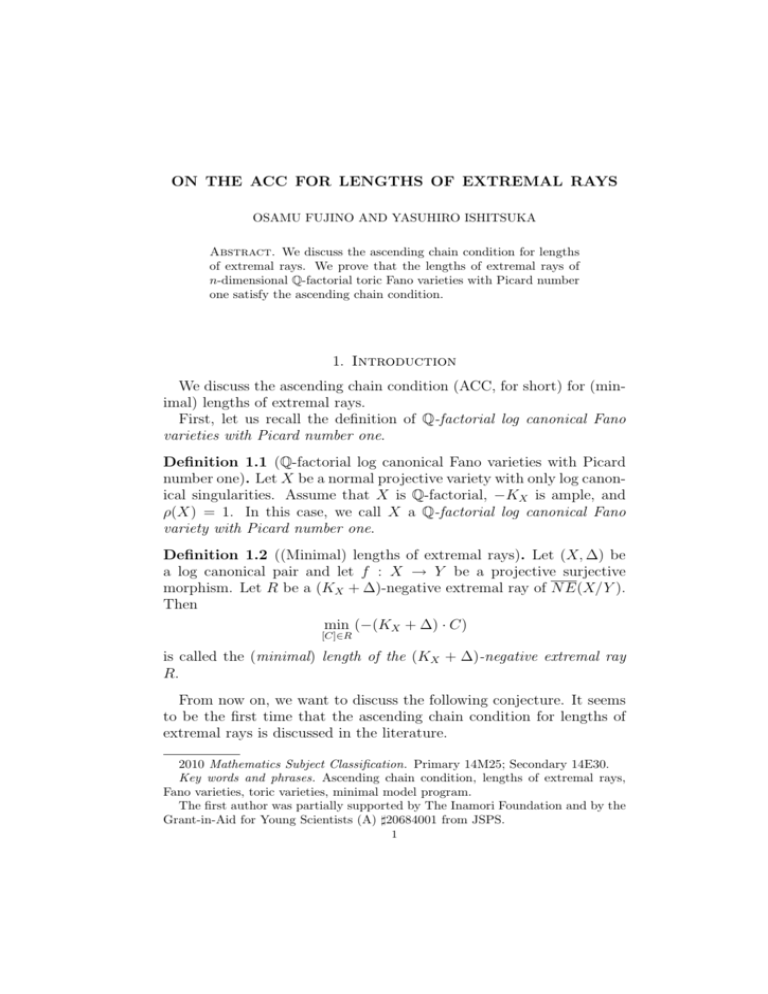
ON THE ACC FOR LENGTHS OF EXTREMAL RAYS
OSAMU FUJINO AND YASUHIRO ISHITSUKA
Abstract. We discuss the ascending chain condition for lengths
of extremal rays. We prove that the lengths of extremal rays of
n-dimensional Q-factorial toric Fano varieties with Picard number
one satisfy the ascending chain condition.
1. Introduction
We discuss the ascending chain condition (ACC, for short) for (minimal) lengths of extremal rays.
First, let us recall the definition of Q-factorial log canonical Fano
varieties with Picard number one.
Definition 1.1 (Q-factorial log canonical Fano varieties with Picard
number one). Let X be a normal projective variety with only log canonical singularities. Assume that X is Q-factorial, −KX is ample, and
ρ(X) = 1. In this case, we call X a Q-factorial log canonical Fano
variety with Picard number one.
Definition 1.2 ((Minimal) lengths of extremal rays). Let (X, ∆) be
a log canonical pair and let f : X → Y be a projective surjective
morphism. Let R be a (KX + ∆)-negative extremal ray of N E(X/Y ).
Then
min (−(KX + ∆) · C)
[C]∈R
is called the (minimal) length of the (KX + ∆)-negative extremal ray
R.
From now on, we want to discuss the following conjecture. It seems
to be the first time that the ascending chain condition for lengths of
extremal rays is discussed in the literature.
2010 Mathematics Subject Classification. Primary 14M25; Secondary 14E30.
Key words and phrases. Ascending chain condition, lengths of extremal rays,
Fano varieties, toric varieties, minimal model program.
The first author was partially supported by The Inamori Foundation and by the
Grant-in-Aid for Young Scientists (A) ]20684001 from JSPS.
1
2
OSAMU FUJINO AND YASUHIRO ISHITSUKA
Conjecture 1.3 (ACC for lengths of extremal rays of Q-factorial log
canonical Fano varieties with Picard number one). We set
{
}
X is an n-dimensional Q-factorial log canonical
.
Ln := l(X) ;
Fano variety with Picard number one.
Here
l(X) := min(−KX · C)
C
where C runs over integral curves on X. For every n, the set Ln
satisfies the ascending chain condition. This means that if Xk is an ndimensional Q-factorial log canonical Fano variety with Picard number
one for every k such that
l(X1 ) ≤ l(X2 ) ≤ · · · ≤ l(Xk ) ≤ · · ·
then there is a positive integer l such that l(Xm ) = l(Xl ) for every
m ≥ l.
We note that l(X) ≤ 2 dim X when X is a Q-factorial log canonical
Fano variety with ρ(X) = 1 (see, for example, [Fj3, Theorem 18.2]).
Although, for inductive treatments, it may be better to consider the
ascending chain condition for lengths of extremal rays of log Fano pairs
(X, D) such that the coefficients of D are contained in a set satisfying
the descending chain condition, we only discuss the case when D = 0
for simplicity. In this paper, we are mainly interested in Q-factorial
toric Fano varieties with Picard number one. Note that a Q-factorial
toric variety always has only log canonical singularities. So, we define
{
}
X is an n-dimensional Q-factorial toric
toric
Ln := l(X) ;
.
Fano variety with Picard number one
Let X be an n-dimensional Q-factorial toric Fano variety with ρ(X) =
1. Then we have l(X) ≤ n + 1. Furthermore, l(X) ≤ n if X 6' Pn (see
[Fj1, Proposition 2.9]). We can easily see that X ' P(1, 1, 2, . . . , 2) if
and only if l(X) = n (see [Fj1, Section 2], [Fj2, Proposition 2.1], and
[Fj4]).
The following result is the main theorem of this paper, which supports Conjecture 1.3.
satisfies the ascendTheorem 1.4 (Main theorem). For every n, Ltoric
n
ing chain condition.
In 2003, Professor Vyacheslav Shokurov explained his ideas on minimal log discrepancies, log canonical thresholds, and lengths of extremal
rays to the first author at his office. He pointed out some analogies
among them and asked the ascending chain condition for lengths of
extremal rays. It is a starting point of this paper. For his ideas on
ON THE ACC FOR LENGTHS OF EXTREMAL RAYS
3
minimal log discrepancies and log canonical thresholds, see, for example, [BS]. We note that Hacon–Mc Kernan–Xu announced that they
have established the ACC for log canonical thresholds (see [HMX]).
We also note that the ACC for minimal log discrepancies is closely related to the termination of log flips (see [S]). We recommend the reader
to see [K] and [T] for various aspects of log canonical thresholds.
We close this section with examples. Example 1.5 shows that the
set Ltoric
does not satisfy the descending chain condition. Example 1.6
n
implies that the ascending chain condition does not necessarily hold
for (minimal) lengths of extremal rays of birational type.
Example 1.5. We consider Xk = P(1, k − 1, k) with k ≥ 2. Then
l(Xk ) =
2
.
k−1
Therefore, l(Xk ) → 0 when k → ∞.
Example 1.6. We fix N = Z2 and let {e1 , e2 } be the standard basis
of N . We consider the cone σ = he1 , e2 i in N 0 = N + Ze3 , where
e3 = 1b (1, a). Here, a and b are positive integers such that gcd(a, b) = 1.
Let Y = X(σ) be the associated affine toric surface which has only one
singular point P . We take a weighted blow-up of Y at P with the
weight 1b (1, a). This means that we divide σ by e3 and obtain a fan ∆
of NR0 . We define X = X(∆). It is obvious that X is Q-factorial and
ρ(X/Y ) = 1. We can easily obtain
(
)
1+a
∗
KX = f KY +
− 1 E,
b
where E = V (e3 ) ' P1 is the exceptional curve of f : X → Y , and
−KX · E = 1 −
b−1
.
a
We note that
−KX · E = min(−KX · C)
C
where C runs over curves on X such that f (C) is a point. We also
note that N E(X/Y ) = N E(X/Y ) is spanned by E. In the above
construction, we set a = k 2 and b = mk + 1 for arbitrary positive
integers k, m. Then it is obvious that gcd(a, b) = 1, and we obtain
−KX · E = 1 −
m
.
k
4
OSAMU FUJINO AND YASUHIRO ISHITSUKA
Therefore, the minimal lengths of KX -negative extremal rays do not
satisfy the ascending chain condition in this local setting. More precisely, the minimal lengths of KX -negative extremal rays can take any
values in Q ∩ (0, 1) in this example.
We note that the minimal length of the KX -negative extremal ray
associated to a toric birational contraction morphism f : X → Y is
bounded by dim X − 1 (see [Fj4]).
For estimates of lengths of extremal rays of toric varieties and related
topics, see [Fj1], [Fj2], and [Fj4].
Acknowledgments. The first author would like to thank Professor
Vyacheslav Shokurov for explaining his ideas at Baltimore in 2003.
The both authors would like to thank Professor Tetsushi Ito for warm
encouragement. They also would like to thank the referee for useful
comments and pointing out some ambiguities.
2. Preliminaries
In this section, we prepare various definitions and notation. We
recommend the reader to see [Fj1, Section 2] for basic calculations.
2.1. Let N ' Zn be a lattice of rank n. A toric variety X(∆) is
associated to a fan ∆, a collection of convex cones σ ⊂ NR = N ⊗Z R
satisfying the following conditions:
(i) Each convex cone σ is a rational polyhedral cone in the sense
there are finitely many v1 , . . . , vs ∈ N ⊂ NR such that
σ = {r1 v1 + · · · + rs vs ; ri ≥ 0} =: hv1 , . . . , vs i,
and it is strongly convex in the sense
σ ∩ −σ = {0}.
(ii) Each face τ of a convex cone σ ∈ ∆ is again an element in ∆.
(iii) The intersection of two cones in ∆ is a face of each.
Definition 2.2. The dimension dim σ of σ is the dimension of the
linear space R · σ = σ + (−σ) spanned by σ.
We denote by Nσ the sublattice of N generated (as a subgroup) by
σ ∩ N , i.e.,
Nσ := σ ∩ N + (−σ ∩ N ).
If σ is a k-dimensional simplicial cone, and v1 , . . . , vk are the first
lattice points along the edges of σ, the multiplicity of σ is defined to
be the index of the lattice generated by the {vi } in the lattice Nσ ;
mult(σ) := |Nσ : Zv1 + · · · + Zvk |.
ON THE ACC FOR LENGTHS OF EXTREMAL RAYS
5
We note that X(σ), which is the affine toric variety associated to σ, is
non-singular if and only if mult(σ) = 1.
Let us recall a well-known fact. See, for example, [M, Lemma 14-1-1].
Lemma 2.3. A toric variety X(∆) is Q-factorial if and only if each
cone σ ∈ ∆ is simplicial.
2.4. The star of a cone τ can be defined abstractly as the set of cones
σ in ∆ that contain τ as a face. Such cones σ are determined by their
images in N (τ ) := N/Nτ , that is, by
σ = (σ + (Nτ )R )/(Nτ )R ⊂ N (τ )R .
These cones {σ; τ ≺ σ} form a fan of N (τ ), and we denote this fan by
Star(τ ). We set V (τ ) = X(Star(τ )). It is well known that V (τ ) is an
(n − k)-dimensional torus invariant closed subvariety of X(∆), where
k = dim τ . If dim V (τ ) = 1 (resp. n − 1), then we call V (τ ) a torus
invariant curve (resp. torus invariant divisor). For the details about
the correspondence between τ and V (τ ), see [Fl, 3.1 Orbits].
2.5 (Intersection Theory). Assume that ∆ is simplicial. If σ, τ ∈ ∆
span γ with dim γ = dim σ + dim τ , then
mult(σ) · mult(τ )
V (σ) · V (τ ) =
V (γ)
mult(γ)
in the Chow group A∗ (X)Q . For the details, see [Fl, 5.1 Chow groups].
If σ and τ are contained in no cone of ∆, then V (σ) · V (τ ) = 0.
2.6 (Q-factorial toric Fano varieties with Picard number one). Now we
n
fix N '
∑Z . Let {v1 , . . . , vn+1 } be a set of primitive vectors such that
NR = i R≥0 vi . We define n-dimensional cones
σi := hv1 , . . . , vi−1 , vi+1 , . . . , vn+1 i
for 1 ≤ i ≤ n + 1. Let ∆ be the complete fan generated by ndimensional cones σi and their faces for all i. Then we obtain a complete toric variety X = X(∆) with Picard number ρ(X) = 1. It is well
known that X has only log canonical singularities (see, for example, [M,
Proposition 14-3-2]) and that −KX is ample. We call it a Q-factorial
toric Fano variety with Picard number one (see also Lemma 2.7 below).
We define
∑ (n − 1)-dimensional cones µi,j = σi ∩ σj for i 6= j. We can
write i ai vi = 0, where ai ∈ Z>0 for every i and gcd(a1 , . . . , an+1 ) = 1.
From now on, we simply write V (vi ) to denote V (hvi i) for every i. Note
that mult(hvi i) = 1 for every i. Then we obtain
mult(µk,l )
,
0 < V (vl ) · V (µk,l ) =
mult(σk )
6
OSAMU FUJINO AND YASUHIRO ISHITSUKA
V (vi ) · V (µk,l ) =
ai mult(µk,l )
·
,
al mult(σk )
and
−KX · V (µk,l ) =
n+1
∑
V (vi ) · V (µk,l )
i=1
=
n+1
1 ∑ mult(µk,l )
(
ai )
,
al i=1
mult(σk )
∑
where KX = − n+1
i=1 V (vi ) is a canonical divisor of X. For the procedure to compute intersection numbers, see 2.5 or [Fl, p.100].
We note the following well-known fact.
Lemma 2.7. Let X be an n-dimensional Q-factorial complete normal
variety with Picard number one. Assume that X is toric. Then X is an
n-dimensional Q-factorial toric Fano variety with Picard number one.
Let us recall the following easy lemma, which will play crucial roles
in the proof of our main theorem: Theorem 1.4. The proof of Lemma
2.8 is obvious by the description in 2.6.
Lemma 2.8. We use the notations in 2.6. We consider the sublattice
N 0 of N spanned by {v1 , . . . , vn+1 }. Then the natural inclusion N 0 → N
induces a finite toric morphism f : X 0 → X from a weighted projective
space X 0 such that f is étale in codimension one. In particular, X(∆)
is a weighted projective space if and only if {v1 , . . . , vn+1 } generates N .
For a toric description of weighted projective spaces, see [Fj1, Section
2].
2.9. In Lemma 2.8, we consider C = V (µk,l ) ' P1 ⊂ X and the unique
torus invariant curve C 0 ⊂ X 0 such that f (C 0 ) = C. We set
mk,l := deg(f |C 0 : C 0 → C) ∈ Z>0
for every (k, l). Then we can check that
mk,l = |N (µk,l )/N 0 (µk,l )|
by definitions, where N 0 (µk,l ) = N 0 /Nµ0 k,l and N (µk,l ) = N/Nµk,l . Let
D be a Cartier divisor on X. Then we obtain
1
C ·D =
(C 0 · f ∗ D)
mk,l
ON THE ACC FOR LENGTHS OF EXTREMAL RAYS
7
by the projection formula. Therefore, we have
C · V (vk ) = V (µk,l ) · V (vk )
=
mult(µk,l )
gcd(ak , al )
=
.
mult(σl )
mk,l al
This is because
gcd(ak , al )
al
0
since X is a weighted projective space.
(C 0 · f ∗ V (vk )) =
2.10 (Lemma on the ACC). We close this section with an easy lemma
for the ascending chain condition.
Lemma 2.11. We have the following elementary properties on ACC.
(1) If A satisfies the ascending chain condition, then any subset B
of A satisfies the ascending chain condition.
(2) If A and B satisfy the ascending chain condition, then so does
A + B = {a + b ; a ∈ A, b ∈ B}.
(3) If there exists a real number t0 such that
A ⊂ {x ∈ R ; x ≥ t0 }
and A ∩ {x ∈ R ; x > t} is a finite set for any t > t0 , then A
satisfies the ascending chain condition.
All the statements in Lemma 2.11 directly follow from definitions.
3. Proof of the main theorem
In this section, we prove the main theorem of this paper: Theorem
1.4. We will freely use the notation in Section 2.
Proof of Theorem 1.4. Let X be an n-dimensional Q-factorial toric Fano
variety with Picard number one as in 2.6. It is sufficient to consider
{v1 , . . . , vn+1 } with the condition
mult(µ1,2 )
mult(µk,l )
≤
a1 mult(σ2 )
ak mult(σl )
for every (k, l). We note that
mult(µk,l )
mult(µk,l )
=
ak mult(σl )
al mult(σk )
for every k 6= l. We also note that we can easily check that
l(X) = min (−KX · V (vi ))
1≤i≤n+1
8
OSAMU FUJINO AND YASUHIRO ISHITSUKA
(cf. [M, Proposition 14-1-2]). In our notation, we have
mult(µ1,2 ) ∑
ai
l(X) =
a1 mult(σ2 ) i=1
n+1
for this {v1 , . . . , vn+1 } by the formula in 2.6. Therefore, we can write
{
}
n+1
∑
mult(µ
)
mult(µ
)
mult(µ
)
1,2
1,2
k,l
Ltoric
=
ai ;
≤
for every (k, l) .
n
a1 mult(σ2 ) i=1
a1 mult(σ2 )
ak mult(σl )
It is sufficient to prove that
{
}
mult(µ1,2 )
mult(µk,l )
mult(µ1,2 )
Mi =
ai ;
≤
for every (k, l)
a1 mult(σ2 )
a1 mult(σ2 )
ak mult(σl )
satisfies the ascending chain condition. This is because Ltoric
is conn
tained in
} {
}
{
mult(µ1,2 )
mult(µ1,2 )
+
+ M3 + · · · + Mn+1 .
mult(σ2 )
mult(σ1 )
We note that
{
} {
} {
}
mult(µ1,2 )
mult(µ1,2 )
1
,
⊂
; m ∈ Z>0 .
mult(σ2 )
mult(σ1 )
m
Therefore, it is sufficient to prove the following proposition by Lemma
2.11.
Proposition 3.1. For 3 ≤ i ≤ n + 1, Mi ∩ {x ∈ R ; x > ε} is a finite
set for every ε > 0.
From now on, we fix i with 3 ≤ i ≤ n + 1. Since
{
}
mult(µ1,2 )
mult(µ1,2 )
mult(µk,l )
Mi =
ai ;
≤
for every (k, l) ,
a1 mult(σ2 )
a1 mult(σ2 )
ak mult(σl )
we have
mult(µ1,2 )
ai
a1 mult(σ2 )
mult(µ1,2 ) ai mult(σj ) mult(µi,j )
·
·
=
a1 mult(σ2 ) mult(µi,j ) mult(σj )
mult(µi,j )
≤
mult(σj )
ε<
for every 1 ≤ j ≤ n + 1 with j 6= i. Therefore, we obtain
mult(σj )
≤ xε−1 y
mult(µi,j )
ON THE ACC FOR LENGTHS OF EXTREMAL RAYS
9
for every 1 ≤ j ≤ n + 1 with j 6= i, where xε−1 y is the integer satisfying
ε−1 − 1 < xε−1 y ≤ ε−1 . We set
Z(i, j) = Zv1 + · · · + Zvi−1 + Zvi+1 + · · · + Zvj−1 + Zvj+1 + · · · + Zvn+1
for j 6= i and
Z(j) = Zv1 + · · · + Zvj−1 + Zvj+1 + · · · + Zvn+1 .
We consider the following diagram.
0
0
0
0
/ Z(i, j)
/ Z(j)
/Z
/0
0
/ Nµ
i,j
/N
/ N/Nµ
i,j
/0
/ Aj
(i,j)
/0
πj
0
/ Nµ /Z(i, j)
i,j
/ N/Z(j)
pj
0
0
0
We note that
mult(σj )
j ≤ xε−1 y.
A(i,j) =
mult(µi,j )
Therefore, for any v ∈ N , we have
(
)
pj ◦ πj (xε−1 y)!v = 0
in Aj(i,j) . Thus,
(
)
πj (xε−1 y)!v ∈ Nµi,j /Z(i, j).
This holds for every 1 ≤ j ≤ n + 1 with j 6= i.∑Let us consider the
natural projection π : N → N/N 0 where N 0 = n+1
k=1 Zvk . Then, by
the above argument, we obtain that
(
) ∩
π (xε−1 y)!v ∈
Nµi,j /(N 0 ∩ Nµi,j ) ⊂ N/N 0 .
j6=i
Claim. π ((xε−1 y)!v) = 0 in N/N 0 , equivalently, (xε−1 y)!v ∈ N 0 .
Proof of Claim. By replacing vi with vn+1 , we may assume that i =
n + 1. We embed N and N 0 into Qn by setting v1 = (1, 0, . . . , 0),
10
OSAMU FUJINO AND YASUHIRO ISHITSUKA
v2 = (0, 1, 0, . . . , 0), . . ., and vn = (0, . . . , 0, 1). Then it is easy to see
that
∩
(N 0 + Nµn+1,j ) = N 0 .
1≤j≤n
On the other hand, we have
Nµn+1,j /(N 0 ∩ Nµn+1,j ) ' (N 0 + Nµn+1,j )/N 0
for 1 ≤ j ≤ n. Therefore,
∩
(
)
π (xε−1 y)!v ∈
Nµn+1,j /(N 0 ∩ Nµn+1,j ) ⊂ N/N 0
1≤j≤n
implies that
(
)
π (xε−1 y)!v = 0
in N/N 0 , equivalently,
(xε−1 y)!v ∈ N 0 .
This completes the proof of Claim.
Thus, we obtain
1 ≤ m1,2 ≤ (xε−1 y)!.
Moreover,
ε<
mult(µ1,i )
gcd(a1 , ai )
gcd(a1 , ai )
=
≤
.
mult(σ1 )
m1,i a1
a1
By the same way, we obtain
gcd(a2 , ai )
.
a2
We note the following obvious inequality:
ε<
mult(µ1,2 )
mult(µ1,2 ) ai mult(σ2 )
ai ≤
·
≤ 1.
a1 mult(σ2 )
a1 mult(σ2 ) mult(µ2,i )
Since a1 , a2 , and ai are positive integers, we have
gcd(l, ai ) =
gcd(a1 , ai ) · gcd(a2 , ai )
gcd(d, ai )
where d := gcd(a1 , a2 ) and l := lcm(a1 , a2 ) = a1 a2 /d. Therefore, we
obtain
gcd(a1 , ai ) gcd(a2 , ai )
d
d
gcd(l, ai )
=
·
·
> ε2
≥ ε2 .
l
a1
a2
gcd(d, ai )
gcd(d, ai )
This means that
l
≤ ε−2 .
gcd(l, ai )
ON THE ACC FOR LENGTHS OF EXTREMAL RAYS
11
Thus, we have
mult(µ1,2 )
ai
gcd(l, ai )
ai
1≥
ai =
=
·
a1 mult(σ2 )
m1,2 l
l
m1,2 gcd(l, ai )
ai
.
≥ ε2
m1,2 gcd(l, ai )
So, we obtain
ai
≤ ε−2 m1,2 ≤ ε−2 (xε−1 y)!.
gcd(l, ai )
On the other hand,
mult(µ1,2 )
ai
ai =
.
a1 mult(σ2 )
m1,2 l
We note that
ai
ai
gcd(l, ai )
=
.
l
m1,2 l
m1,2
gcd(l, ai )
This implies that Mi ∩ {x ∈ R ; x > ε} is a finite set. This is because
ai
l
,
, m1,2
gcd(l, ai ) gcd(l, ai )
are positive integers and
ai
l
≤ ε−2 (xε−1 y)!,
≤ ε−2 , m1,2 ≤ (xε−1 y)!.
gcd(l, ai )
gcd(l, ai )
Thus we proved the proposition and Ltoric
satisfies the ascending chain
n
condition.
References
[BS]
C. Birkar, and V. V. Shokurov, Mld’s vs thresholds and flips, J. Reine
Angew. Math. 638 (2010), 209–234.
[Fj1] O. Fujino, Notes on toric varieties from Mori theoretic viewpoint, Tohoku
Math. J. (2) 55 (2003), 551–564.
[Fj2] O. Fujino, Toric varieties whose canonical divisors are divisible by their
dimensions, Osaka J. Math. 43 (2006), 275–281.
[Fj3] O. Fujino, Fundamental theorems for the log minimal model program, Publ.
Res. Inst. Math. Sci. 47 (2011), 727–789.
[Fj4] O. Fujino, Notes on toric varieties from Mori theoretic viewpoint, II, in
preparation.
[Fl]
W. Fulton, Introduction to toric varieties, Annals of Mathematics Studies,
131. The William H. Roever Lectures in Geometry. Princeton University
Press, Princeton, NJ, 1993.
[HMX] C. D. Hacon, J. Mc Kernan, C. Xu, Boundedness of volumes and Shokurov’s
ACC conjecture, in preparation.
12
[K]
[M]
[S]
[T]
OSAMU FUJINO AND YASUHIRO ISHITSUKA
J. Kollár, Singularities of pairs, Algebraic geometry—Santa Cruz 1995, 221–
287, Proc. Sympos. Pure Math., 62, Part 1, Amer. Math. Soc., Providence,
RI, 1997.
K. Matsuki, Introduction to the Mori program, Universitext. SpringerVerlag, New York, 2002.
V. V. Shokurov, Letters of a bi-rationalist. V. Minimal log discrepancies
and termination of log flips, Proc. Steklov Inst. Math. 2004 (246), 315–336.
B. Totaro, The ACC conjecture for log canonical thresholds (after de Fernex, Ein, Mustaţă, Kollár), Séminaire Bourbaki. Vol. 2009/2010. Exposés
1012–1026. Astérisque No. 339 (2011), Exp. No. 1025, ix, 371–385.
Department of Mathematics, Faculty of Science, Kyoto University,
Kyoto 606-8502, Japan
E-mail address: fujino@math.kyoto-u.ac.jp
Department of Mathematics, Faculty of Science, Kyoto University,
Kyoto 606-8502, Japan
E-mail address: yasu-ishi@math.kyoto-u.ac.jp
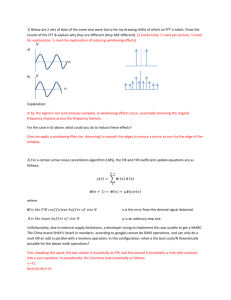
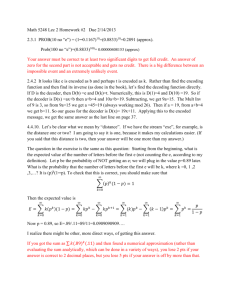



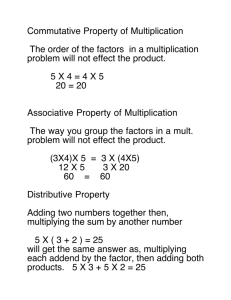
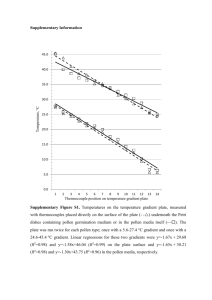
![Question #1: David vs. Goliath (14 points) [30 minutes]](http://s3.studylib.net/store/data/007454795_1-f030c64aa65170f25a1ac834939bd821-300x300.png)

